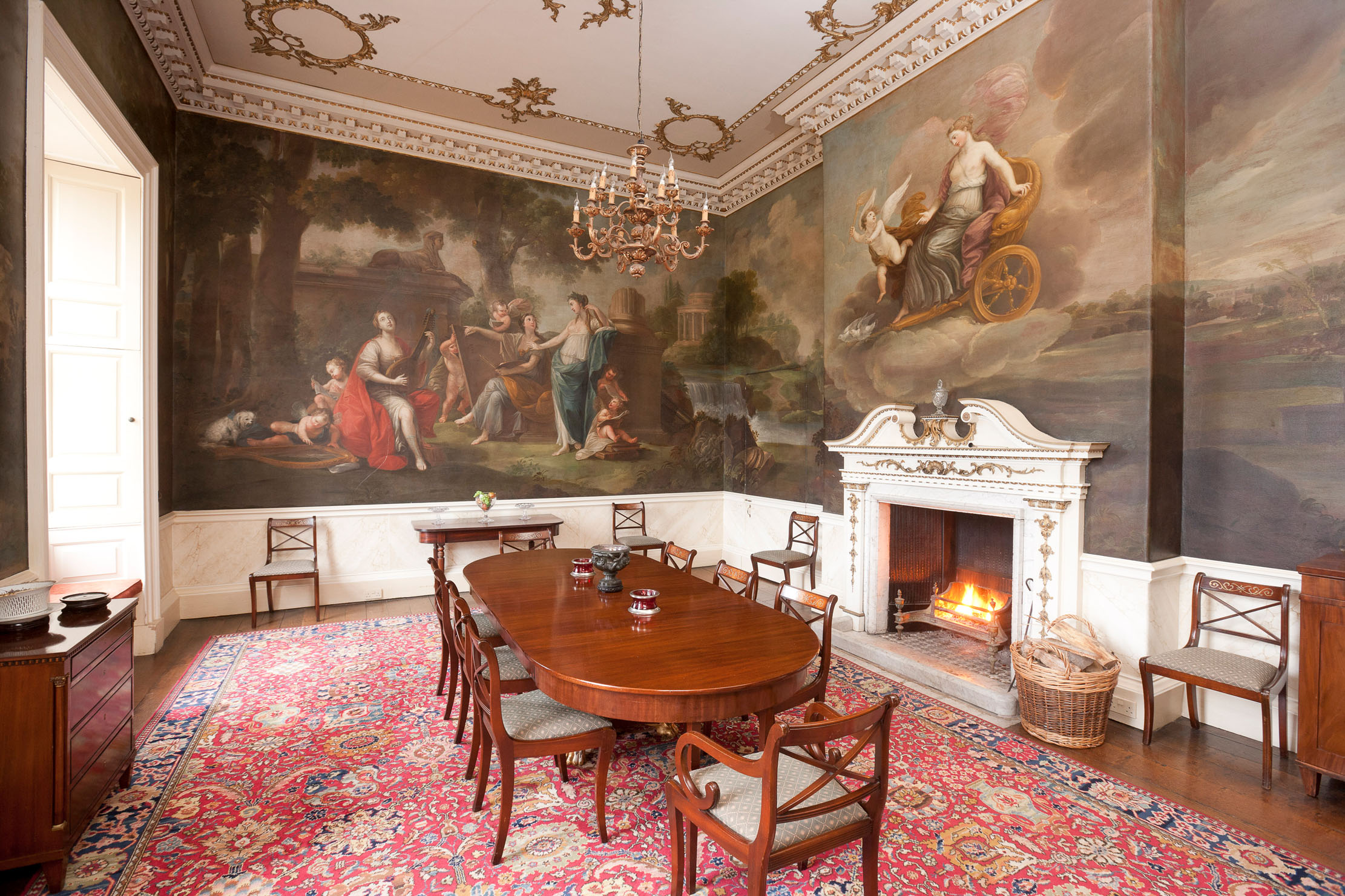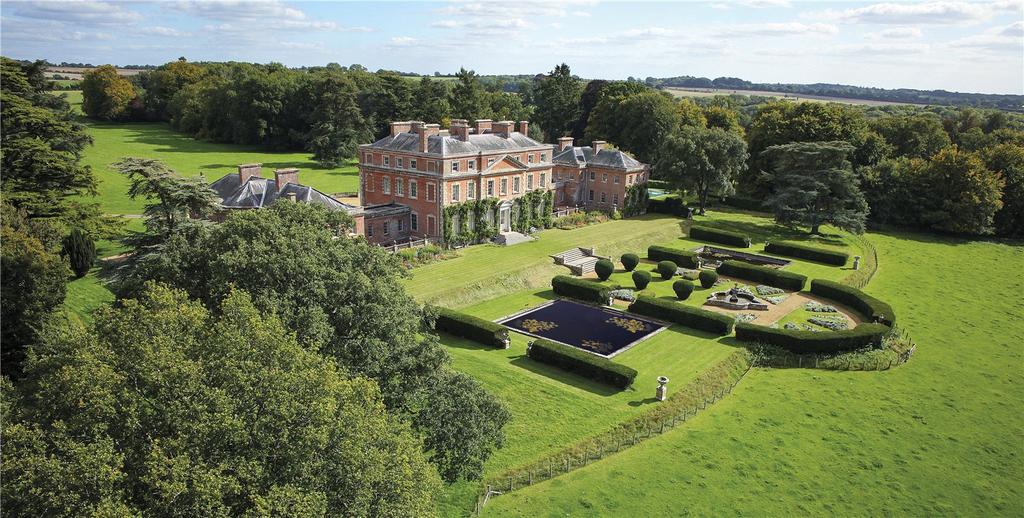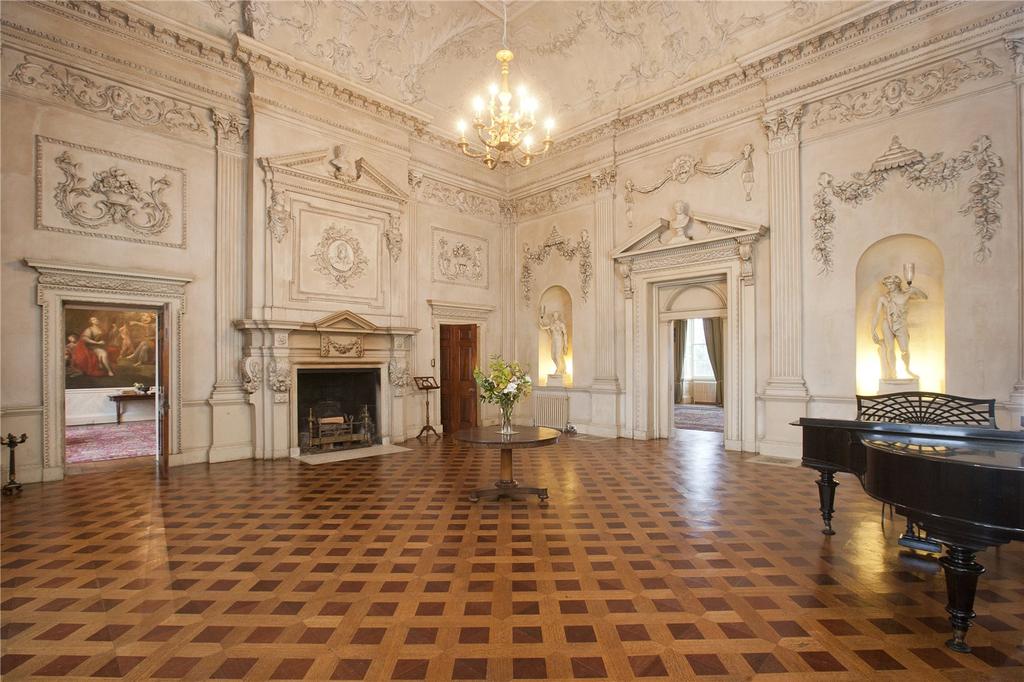One of Britain's grandest — and certainly one of the largest — country houses is up for sale as the fully-restored Trafalgar Park hits the market
Trafalgar Park is a magnificent Grade I-listed estate an outstanding location on the edge of the New Forest National Park and Cranborne Chase, with 35,871 sq ft of stunning accommodation within 66 acres of gardens and grounds. Penny Churchill explains more.


Writing in Country Life in 1997, the magazine’s then-Architectural Editor the late Giles Worsley referred to stately Grade I-listed Trafalgar Park, near Salisbury, Wiltshire, as ‘the Flying Dutchman of the property world, endlessly seeking an owner and being sold on while the fabric slowly decayed’.
The fine country house built by John James of Greenwich in 1733 for City grandee Sir Peter Vandeput was nevertheless described as ‘an estate agent’s dream, a house that always seemed to come back on the market’. In true fashion, the house now finds itself back on the market via Savills at a guide price of £11 million, a price which buys one of the grandest, not to mention one of the biggest private homes in Britain.

Sir Peter died in 1748 and, four years later, Standlynch Park and its surrounding estate were bought by William Young, later Governor of Dominica, and sold by him to Henry Dawkins MP, who added the north and south wings designed by John Wood the Younger of Bath.
Dawkins also commissioned his friend and fellow member of the Society of Dilettanti, Nicholas Revett, a founding member of Britain’s Greek Revivalist movement, to design the portico, interiors for the north wing and a number of chimneypieces. He then commissioned fashionable Italian painter and engraver Giovanni Battista Cipriani to paint the scenes in his music room, now known as the Cipriani Room.

Following Dawkins’s death in 1814, the Standlynch Park estate was bought by the Crown on behalf of the Nelson family as reward for the Admiral’s victory at Trafalgar in 1805. Horatio Nelson having died in the battle, Standlynch Park, renamed Trafalgar House, its estate and a substantial pension were settled on his brother, William, an unassuming Norfolk clergyman who was created 1st Earl Nelson.
Enriched by marriage and inheritance, his successors expanded the landholdings to 7,196 acres by 1884. However, the estate failed to weather the farming depression of the late 19th and early 20th centuries and, after the Second World War, the imposition of punitive death duties and the withdrawal of the Nelson pension by the then Labour government forced the sale of Trafalgar House and its remaining 3,415 acres to the Duke of Leeds in 1948.

The Duke’s son-in-law, Viscount Chandos, later bought Trafalgar House with only 10 acres of land when the rest of the estate was sold to the neighbouring Longford Castle estate in 1953. The Chandos family lived in some style at Trafalgar House until 1971, when Lord Chandos sold it to a City banker, who, in 1978, sold it in turn to an entrepreneur who ran a successful business from the stables, but found the house surplus to requirements.
Exquisite houses, the beauty of Nature, and how to get the most from your life, straight to your inbox.
In 1992, he sold the property to a Swedish hotelier with a passion for Nelsoniana. He was granted planning consent to convert it to a boutique country hotel, but was stopped in his tracks by the recession of the early 1990s and chose not to proceed.

Despite frequent advertisements in Country Life, Trafalgar House remained unsold and uninhabited and the buildings—especially the north wing, which had lain empty since the Second World War—continued to deteriorate. Disaster loomed until, one day in 1995, Michael Wade, a passionate supporter of opera, music and the Arts, went to see the house on a whim, was totally smitten, bought it that year and renamed it Trafalgar Park.
He envisaged converting the south wing into a family home, using the central block for corporate entertaining and transforming the derelict north wing into an auditorium based on elements of Revett’s original design. Despite the support of Worsley and other architectural experts, who maintained that the alterations involved were ‘markedly less damaging than earlier proposals for which planning consent was given’, the conservationists refused to allow the removal of internal walls in the north wing to accommodate the auditorium central to Mr Wade’s concept.

Undaunted, he soldiered on and, over the past 30 years, has restored Revett’s grand portico and magnificent reception rooms in the main three-storey house, notably the Baroque hall, the Saloon and the Cipriani Room, which provide a spectacular setting for musical and theatrical events, weddings, conferences and an impressive location for television and film dramas.
The main house offers three further reception rooms, five bedrooms and three bathrooms on the first floor, and a further six bedrooms, two bathrooms and a kitchen on the second floor.

True to his original plan, Mr Wade has reconfigured the south wing as a practical, two-storey family home with a large new kitchen/breakfast room, a splendid octagonal dining room and a family sitting room on the ground floor, plus a principal bedroom suite, two further bedrooms, a bathroom and studio on the second floor.
The partly restored north wing contains some important Revett interiors, including a particularly fine ceiling inspired by the Temple of Bel at Palmyra, with six further rooms on the first floor. Most importantly perhaps, Mr Wade has bought back more than 56 acres of Trafalgar’s original parkland from the Longford Castle estate and created a new tree-lined entrance driveway with planning consent for a pair of gate lodges.

Sadly, his remarkable odyssey looks set to end with the launch onto the market of his cherished Trafalgar Park estate, including the original stables and the disused Standlynch Church, now a romantic folly.
‘As one of the most architecturally authentic 18th-century houses in England, set in an outstanding rural location on the edge of both the New Forest National Park and the Cranborne Chase, Trafalgar Park is indeed a country-house agent’s dream,’ says selling agent Crispin Holborow.

The Nelson connection in this part of the world was reinforced when, at some point before 1833, the Revd William Nelson bought the early-19th-century Redlynch House in the nearby village of that name for his son-in-law Samuel Hood, 2nd Baron Bridport.
Ownership of the house changed hands in 1843 and, throughout the late 1800s and the first half of the 20th century, it was owned by members of the gentry or retired military officers. It is also thought to have been, at some point, the New Forest hunting lodge of the Monckton/Ilchester family of Abbotsbury, Dorset.

Trafalgar Park is currently on the market via Savills at a guide price of £11 million — see more pictures, or enquire with the agent for further details.
Salisbury: What you need to know
Location: Salisbury is a medieval cathedral city in Wiltshire, approximately 9 miles from Stonehenge. There is a rail station within the town that offers links to London Waterloo. The M5 and A303 are located closeby, which provides easy access links to the south and north.
Atmosphere: Salisbury is a bustling, beautiful city that benefits from excellent transport links, and is set next to the River Avon.
Things to do: Visit Stonehenge, The Salisbury Racecourse (the oldest racecourse in the country) and Britain's tallest spire at the Cathedral Church of the Blessed Virgin Mary. There are wonderful shopping facilities, as well as numerous restaurants, bars, cafes and pubs to visit.
Schools: Donwton C of E VA Primary School, The Trafalgar School at Downton and Morgan's Vale and Woodfalls Church of England Primary School are all wonderful local options, with Bishop Wordsworth's Church of England Grammar School and St Edmund's Girls' School for secondary options.
See more property for sale in the area.

Credit: Strutt and Parker
Best country houses for sale this week
An irresistible West Country cottage and a magnificent Cumbrian country house make our pick of the finest country houses for

